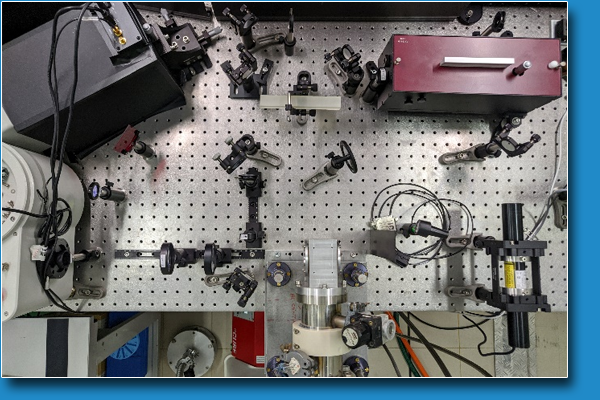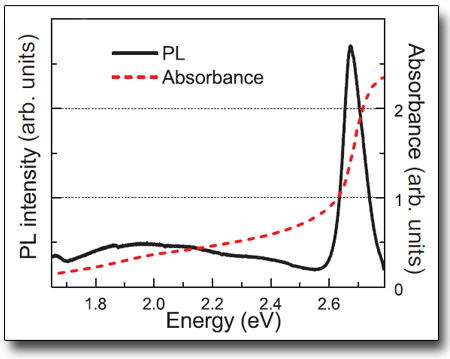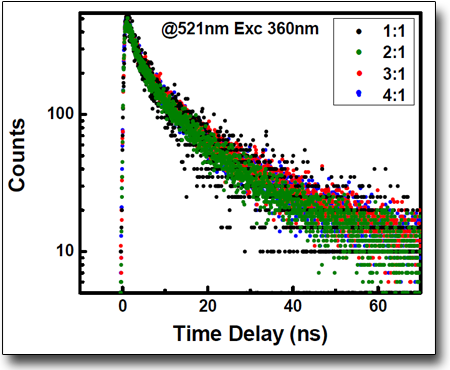
TECHNICAL SPECIFICATIONS
- Repetition Rate: 80 MHz
- Temporal Resolution: fino a 40 ps
- Temporal window: fino a 10 ns
- Pump: 800, 400 nm (80 MHz), 632 nm (cw)
- Sample Temperature: 10-300 K
AVAILABLE TECHNIQUES
- Static Photoluminescence
- Time-Correlated Single-Photon Counting (TCSPC)
- Optical Microscope is for micro-PL with spatial resolution of 600 nm
SAMPLE
-
Sample dimensions: 10 x 10 mm (ideal), 5 x 5 mm (minimal), 30 x 30 mm (maximal)
Sample holders are available -
Liquid sample only at RT. Cuvettes are available. Typical volume used 500 μl
-
Solid samples can be studied in back-scattering up to 10K
-
Time for loading the sample and start measure: 10 min at RT, 60-90 min at 10K
USE FOR
-
Semiconductor/ Microelectronics
-
Nanostructured materials
-
Hybrid Materials
-
Molecules and Complexes
-
Photovoltaic
-
Plasmonics
-
Photocatalysis
-
Sensors
-
Energy
-
Biophysics
CASE STUDIES
Ultrafast carrier dynamics, band-gap renormalization, and optical properties of ZnSe nanowires
Strong light trapping at the band-gap energy has been observed in reflectivity measurements of ZnSe nanowires (NWs). The PL reveals the presence at room temperature of excitonic emission that shows a decay time of 0.5 ns. All of these features indicate that our ZnSe NWs have quality comparable to epitaxial films and can be used for optical devices and nonlinear optics.
Phys. Rev. B, 10.1103/PhysRevB.94.165442


Nanocrystalline films of CsPbBr3 e Cs4PbBr6 have been deposited from solutions. Absorption, emission and excitation spectra have been performed in the UV‐visible range. It was observed that the Cs4PbBr6 crystals exhibited the most intense emission of light, with a bright green emission at 520 nm, the inclusion of CsPbBr3.
Si veda: Crystals, 10.3390/cryst9060280

 English (UK)
English (UK)  Italiano (Italia)
Italiano (Italia)